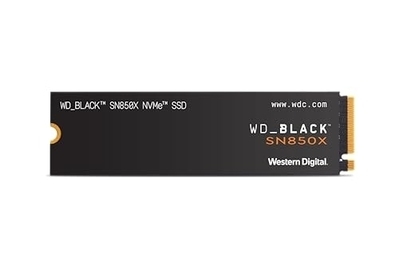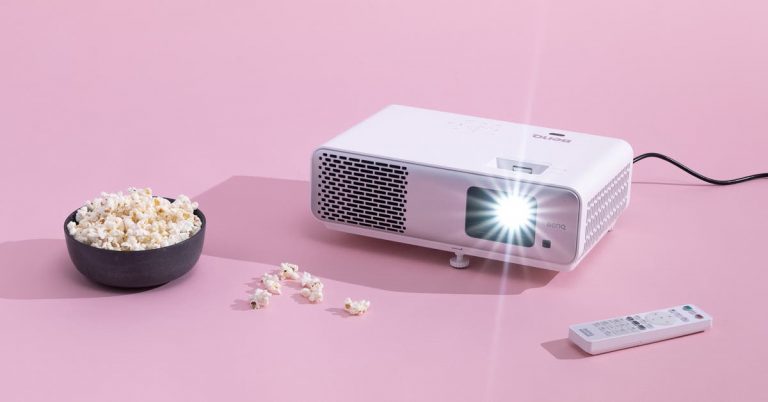Choosing the Right PlayStation 5
If you have a perfectly good PS4, and you’re not interested in newer releases, there are probably enough games available for the older console that you can keep waiting to upgrade. But if you have any interest in new and upcoming games, it’s time to upgrade — 2025 will likely be the final year that the PS4 sees any new games at all. But in addition to access to newer games, upgrading from the PS4 to the PS5 brings a number of quality-of-life improvements and enhancements to games you may already own.
For example, although God of War: Ragnarok is available on the PS4, playing it on the PS5 offers high-resolution modes and even 120 Hz support for supported televisions. PS5-exclusive titles have been a little slow to trickle out, but almost every PS4 exclusive since 2019 has gotten some kind of PS5 patch to improve it for owners of Sony’s current-generation consoles, and the day-to-day experience is leaps and bounds better.
Here’s everything you need to know about why the PS5 is worth the upgrade.

New games with better graphics
The PlayStation 5 features a more powerful generation of graphics hardware than in previous consoles, and the results should be noticeable in a variety of ways. In most new games, you can expect higher resolutions, higher frame rates, and more detailed characters and environments than you see on the PlayStation 4. You can also expect a greater number of fancy tricks, such as smoke and fog, that have physical properties as well as lighting that behaves and reflects more like light does in the real world.
That last part is particularly likely to improve as the generation progresses. The PlayStation 5’s GPU is capable of hardware-accelerated ray tracing, a type of graphics rendering that allows for much more sophisticated visual effects and lighting. Launch titles such as Spider-Man: Miles Morales use ray-traced reflections for much more realistic reflective surfaces, as does 2021’s Ratchet and Clank: Rift Apart. Ray tracing has been referred to for years as the holy grail of video game graphics, but developers have only scratched the surface of what they’ll achieve with it in the next several years.
Higher frame rates and better performance
While developers are still learning to take advantage of all of the PS5’s more powerful graphics technology, the hardware improvements of the PlayStation 5 are noticeable elsewhere. The PS5 has a powerful CPU, which means a fast user interface, speedy load times, more sophisticated character and game behaviors, and just more stuff on screen at any given moment than the PS4 or Xbox One could produce.
But the biggest improvements should be most apparent in frame rates, which hit 60 frames per second much more often than on the PS4. The more frames per second, the more often the controller and the game are communicating, which means more-responsive controls. The more-powerful hardware also helps to build bigger worlds and allows more players in a game.
A number of games originally released for the PlayStation 4 include “performance” modes that have unlocked frame rates on the PS5, and these games and many others should exhibit huge improvements in performance and responsiveness. In addition, many of Sony’s flagship PlayStation 4 exclusives—including God of War (2018), Ghost of Tsushima, The Last of Us Part II, Days Gone, and Horizon Zero Dawn—have received updates that upgrade their performance to 60 frames per second (and they also benefit from significantly improved loading times).
Faster storage and faster load times
All of your games and saves on the PlayStation 5 are stored on a PCIe-based drive, which—combined with other custom hardware and a faster processor—brings a huge improvement in console startup, game bootups, and even in-game load times, compared with previous-generation consoles, which used mechanical hard disks. Many PS4 games run better on a PlayStation 5, as well.
The PlayStation 5 uses an NVMe-based custom memory component. On the launch version of the PlayStation 5, you get only 667 GB of usable storage space for games; PlayStation 5 Slim owners get 830 GB. It can fill up quickly. Games such as The Last of Us Part 1 take up 79 GB of that drive, and others consume much more. If you’re spending more on the PS5 Pro, you get a considerable bump to 1.89 TB of usable storage thanks to its included 2 TB drive.
However, the PS5 also includes an expansion slot for standard NVMe drives. It supports PCIe 4.0 drives, and you can both store and run games from that expanded storage. PlayStation recommends a premium, fast PCIe 4.0 NVMe drive, which needs a heat sink. But trusted video game technology resource Digital Foundry’s testing with a variety of drives has shown pretty good results with cheaper, good-but-not-cutting-edge drives, with similar performance and load speeds demonstrated across a variety of devices.
We recommend the Western Digital SN850X for PlayStation 5 owners looking to expand their storage. Because NVMe drives can get very hot, which can reduce performance or even cause hardware failure, we recommend buying a drive with a heat sink. Installing an aftermarket heat sink to a drive without one isn’t nightmarishly difficult, but it takes a number of minutes and is more than a little annoying for just a few dollars of savings. And this step accompanies the not especially difficult but still involved process of opening up the PlayStation 5 and installing the drive.
The PlayStation 5 comes with 1 TB of storage, which doesn’t seem like enough space now that many games take up more than 100 GB of space. However, Sony’s console demands fast PCIe 4.0 speeds and a capable heatsink if you want to upgrade your storage. The Western Digital’s Black SN850X NVMe SSD is fast and stays cool under duress, thanks to its heatsink. It’s also cheaper than similarly equipped, often worse-performing drives.
PS5 games can also be transferred and stored on external devices (but not played from them), so such drives can serve as an archive that will let you avoid having to redownload a game in the future.
As for backward-compatible PS4 titles, games can be stored and played via external storage options, and USB SSD options are plenty fast and cheaper than adding an NVMe drive. Just plug in an external, portable SSD drive, such as the Samsung T7 Shield we recommend, another similar drive, or a plain SSD attached via a USB-to-SATA cable.
If you’re most concerned about storing a lot of PS4 games for later, a USB hard drive like the Western Digital My Passport Ultra is your best option. Load times are only somewhat better than on the PlayStation 4, and you can’t use such drives for PS5 software, but you can’t beat the price per gigabyte.
Any drives you’re already using with a PlayStation 4 console should work on the PlayStation 5. Plug them in, and compatible PS4 games you have installed will appear automatically and should be playable barring any required updates.
A fast user experience
The PlayStation 5 user interface is designed to take advantage of the console’s solid-state storage and more powerful CPU to allow for faster navigation and some new features. The difference is clear as soon as you boot up the PlayStation 5, which transitions from fully powered off to its user login screen in just over 20 seconds. It comes back from standby mode in about six seconds, a considerable improvement over previous-generation consoles.
Once you log in, you’ll find several quickly accessible groups, including games, media apps, and settings. Hitting the PlayStation button on the PS5’s DualSense controller brings up the Control Center, which is intended to immediately surface the most common and important options most players need while they’re using the system. This panel includes notifications, music-playback controls, audio levels for headset wearers, friends lists, and system standby.
The PS5’s OS is an attractive evolution from that of the PS4, and in some ways it’s faster to navigate than its predecessor. If you’re trying to get to a game or app as quickly as possible, you need to press far fewer buttons to do that. But once you want to do anything more involved, it’s still quite a lot of navigation to get where you might want to go. We appreciate that the PlayStation 5 provides a superficial but appealing bit of new-console smell for those coming from a PlayStation 4, but it’s not quite at the level of usability found in the PlayStation 4 OS.
An improved controller

The PlayStation 5’s controller is the DualSense gamepad, which retains the touchpad and share buttons from the PS4’s DualShock 4 pad, along with the same basic layout. However, the DualSense is a bit larger, similar to Xbox controllers, with bigger face buttons, tighter sticks, and more pronounced triggers. There’s also a light texture on the back side of the controller grips, much as on the Xbox Series X and S controllers.
The DualSense’s triggers also feature haptic feedback, which means they can provide additional resistance to create different kinds of feedback. For vibration, the DualSense uses coil actuators rather than simpler vibrating motors for a more varied effect. The controller also once again includes a speaker, a built-in microphone array (with a noise-canceling mic on the bottom of the pad), and a USB-C port for charging.

The sounds, combined with the controller’s vibrations, create a high level of physical feedback. The haptic triggers can also provide a remarkable amount of tension for games that take advantage of it.
The DualSense’s built-in microphone works well enough, and there’s a convenient combination indicator light and mute button that lets you see whether the microphone is picking up your audio.
Sony also offers a pro controller called the DualSense Edge, which is a more customizable—and more expensive—version of the standard DualSense.
What about the PlayStation VR2?

The PlayStation VR2 is designed to be a companion to the PlayStation 5. It’s not a standalone headset, as it uses a single USB-C cable to connect to the PS5, but it is comfortable and easy to set up, it looks great, and it comes closer than any other cabled headset to bringing console-level simplicity to VR.
Because it uses a “halo” harness system that rests on top of your head, the PS VR2 is more comfortable than other leading headsets and adjusts more simply. It’s also easier to put on and take off, and it’s the easiest time we’ve had adjusting a headset around glasses. Each eye has a 2000×2040 OLED screen that minimizes “screen-door effect,” and the high-refresh-rate modes of 90 Hz and 120 Hz should help mitigate VR-induced motion sickness for some wearers.
PS VR2’s goggles also include IR cameras that enable full eye tracking.

The PS VR2 now uses inside-out tracking and custom Sense controllers that should feel familiar to anyone who has used a VR setup in the past several years.
The result is very good hardware. Currently though, even at $400, the PS VR2 is a tough sell, and it isn’t backward-compatible with the previous-generation PS VR’s software library, so it lacks the plethora of games you get with Meta’s Quest headsets or other, PC-based headsets. As for exclusives, other than added VR modes to games like Gran Turismo 7 and Resident Evil: Village, options are limited, and they’re mostly available on other platforms as well.
The original line of PlayStation VR headsets (both the launch version from 2016 and the somewhat streamlined update that Sony released in 2018) are compatible with the PlayStation 5 but require the PlayStation Camera, and they need a special adapter that you can order only from Sony.







